The Budapest Parliament stands as one of the most iconic and photographed buildings in the Hungarian capital. Its distinctive profile, with its spires soaring skyward and its imposing presence on the banks of the Danube, has made it a globally recognised landmark. Standing majestically on the banks of the river running through the city, it dominates the cityscape and attracts visitors from all corners of the globe. Its strategic location not only offers spectacular panoramic views, but also makes it a visual focal point accessible from many parts of the city. More than just a government building, the Budapest Parliament is a living symbol of Hungary’s rich history, deep national identity and constant aspiration for sovereignty. Its construction and elaborate design were driven by a fervent desire to assert Hungarian independence in a period of significant political and social transformation.
General Information
The official name of this building in Hungarian is Országház, a name that translates as ‘House of the Country’ or ‘House of the Nation’. This dual name reflects the importance of the building both as a physical structure housing the government and as a symbolic representation of the Hungarian people and their sovereignty. In international and tourist contexts, it is more commonly referred to simply as the Hungarian Parliament or the Parliament of Budapest.
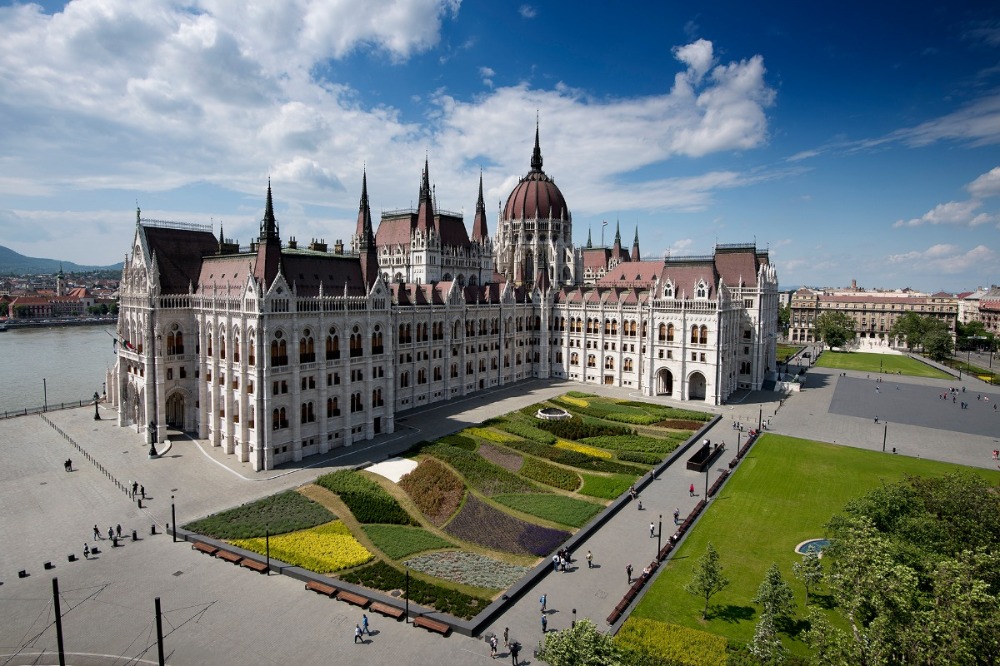
Its precise location is 1-3 Kossuth Lajos Square, in the V district of Pest, Budapest, on the east bank of the Danube River. This riverfront location is not only picturesque, but also strategic, offering breathtaking views of the Buda Castle on the opposite bank.
La función principal del Parlamento de Budapest es servir como sede de la Asamblea Nacional de Hungría, el órgano legislativo unicameral del país. En este edificio se reúnen los 199 miembros elegidos por el pueblo húngaro para períodos de cuatro años, con el propósito fundamental de debatir y aprobar las leyes que rigen la nación.
History and Context
The decision to build a new parliament in Budapest was intrinsically linked to the unification of three cities in 1873: Buda, Óbuda and Pest. This merger created a new capital for Hungary, which at the time was part of the Austro-Hungarian Empire. Seven years after unification, in 1880, the Hungarian assembly took the momentous resolution to establish a new parliamentary building that would be representative of the nation and express its growing desire for sovereignty. The construction of this parliament was conceived as a major national project, symbolising Hungary’s strong commitment to the values and institutions of Western Europe, particularly Britain, whose parliamentary political system was admired by many 19th century Hungarian leaders. Moreover, the construction of the building was integrated into Hungary’s millennium celebrations in 1896. The aim was for the parliament to be ready to commemorate the 1000 years since the founding of the first Kingdom of Hungary.
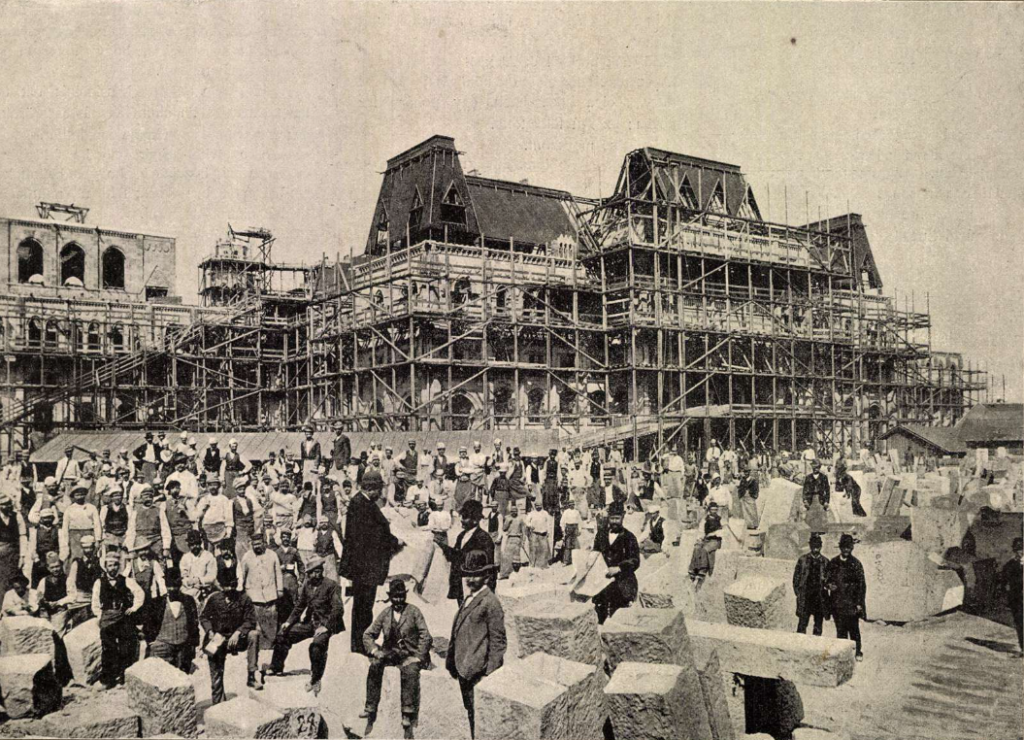
The chronology of the construction of the Budapest Parliament spanned almost two decades. In 1882, an international competition was held to select the best design for the new parliamentary building, a competition that was eventually won by the renowned Hungarian architect Imre Steindl. His neo-gothic style proposal was chosen from a total of 19 designs submitted. The actual construction began on 12 October 1885, with the arduous task of excavating the huge moat that would serve as the foundation for the building’s foundations. This was a massive engineering project that initially involved 150 workers. The solemn laying of the foundation stone took place almost two years later, on 16 August 1887. This event, although significant, was not marked by a large public ceremony. The building was partially inaugurated in 1896, coinciding with the Hungarian millennium celebrations, although construction was not fully completed until 1904. Despite the partial inauguration, construction work continued for several more years to finalise all the details and ornamental elements. The first formal parliamentary session was held in the new building in 1902.
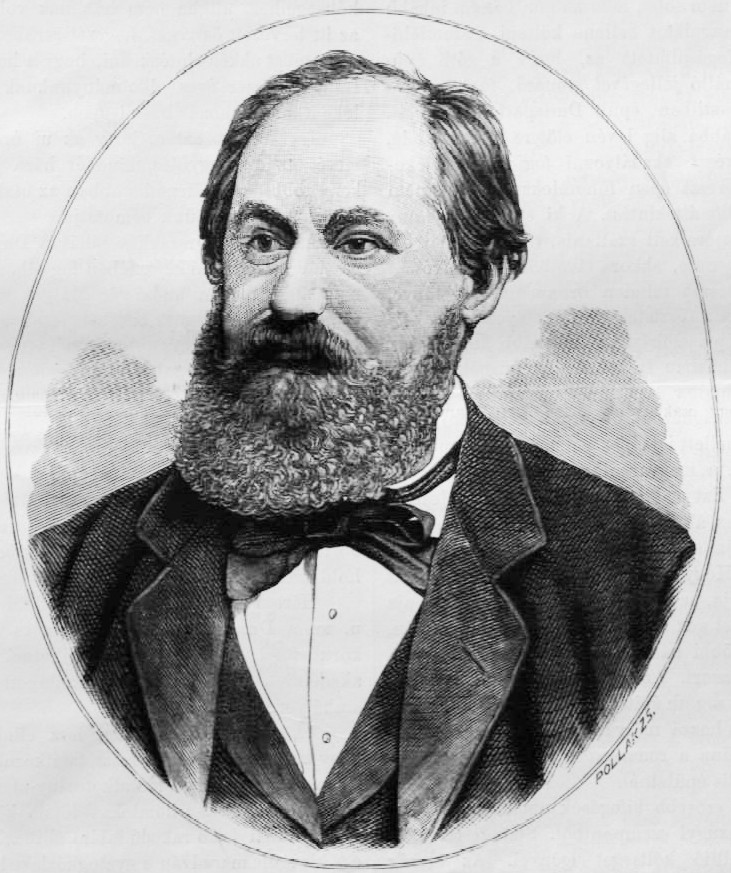
The chief architect and creative mind behind the design of the Budapest Parliament was Imre Steindl. Steindl was a Hungarian architect of great prestige who, in addition to his design work, was a professor at the Technical University of Budapest. In conceiving the architectural style of the Parliament, Steindl was notably inspired by the Palace of Westminster in London, adopting the distinctive neo-Gothic design.
The choice of the Parliament’s location on the banks of the Danube was not accidental, but the result of careful consideration of strategic and symbolic factors. The proximity to the river was deliberately chosen to symbolise Hungary’s aspiration to maintain its sovereignty and assert its national identity within the complex web of the Austro-Hungarian Empire. In addition to its political significance, the riverfront location also enhanced the building’s visibility and accessibility to citizens and visitors. A popular legend holds that influential Hungarian politicians of the time wished the Parliament to be the first thing Emperor Franz Joseph would see when he looked down from his residence in Buda Castle on the opposite bank of the Danube. This strategic location was intended to remind the monarch that his power ultimately emanated from the Hungarian people. From a more practical perspective, the location also offered an extensive plot of land owned by the state. Tömő Square, the specific site where the Parliament was built, was a large and relatively unobstructed state plot. The construction in this area, which was previously considered underdeveloped, was part of a larger urban plan to create a new public office district in the city. Several major ministries were planned to be built in the same area. Finally, the riverfront location offered an open and unobstructed view, and was considered a quiet and peaceful place, with the promise of a future park on one side, which would contribute to creating a dignified and representative environment for the seat of the Hungarian parliament.
Architecture and Design
The predominant architectural style of the Budapest Parliament is neo-Gothic. This style is characterised by imposing proportions, pointed arches, intricate ornamental detailing and an overall sense of verticality and grandeur reminiscent of medieval Gothic cathedrals. However, the design of the Parliament also incorporates Baroque elements in its plan, which is symmetrical and cross-shaped. Renaissance influences can also be seen in the richly decorated ceilings and, particularly notably, in the building’s majestic central dome. This fusion of architectural styles, although eclectic, is presented in a surprisingly harmonious way. Inspiration for the style of the Parliament came from various European sources: the Vienna Town Hall was taken as a model for the Gothic elements, while the Maria vom Siege church, also in Vienna, served as inspiration for the design of the Renaissance dome.
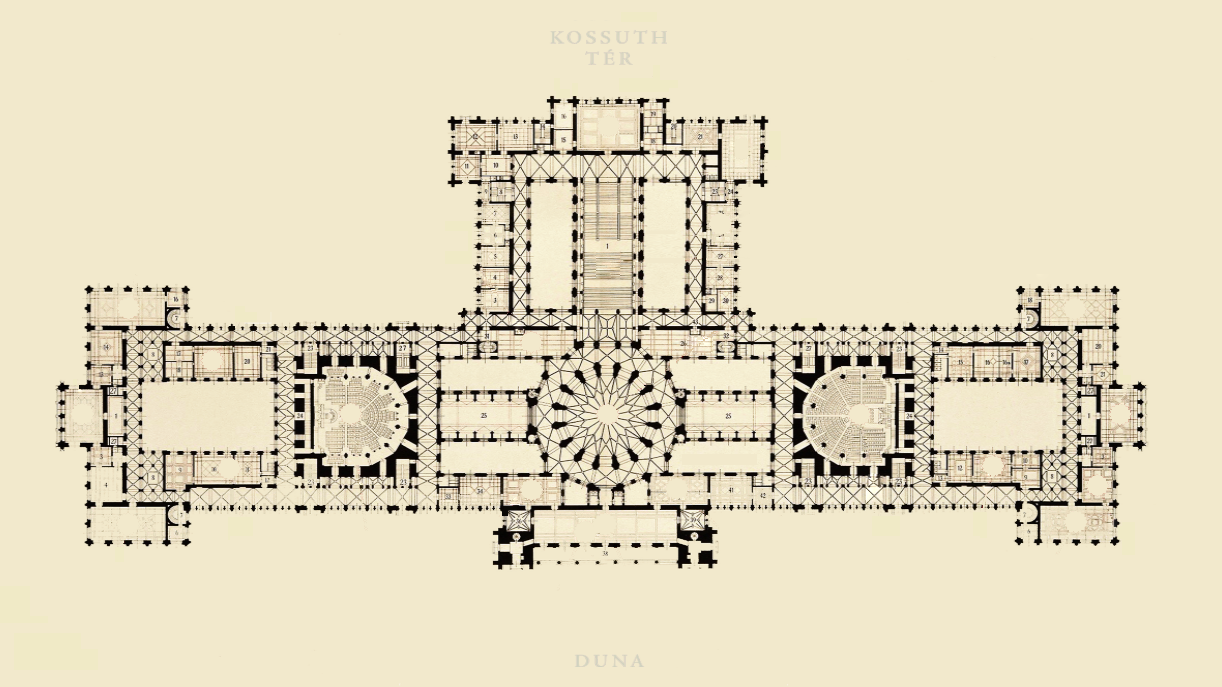
The dimensions of the Budapest Parliament are truly remarkable. It is the largest building in Hungary since its construction, underlining its importance and prominence in the national landscape. Its length reaches 268 metres (879 feet), while its width is 123 metres (404 feet). These dimensions place it among the largest parliaments in the world. The imposing central dome of the Parliament rises to a height of 96 metres (315 feet). This height is no accident, as it commemorates Hungary’s millennium in 1896 and the historic conquest of the Carpathian Basin by the Magyar tribes in 896.
The exterior of the Parliament is a masterpiece of neo-Gothic architecture. Its almost perfectly symmetrical façade is richly adorned with Gothic detailing. The building has a total of 24 towers and numerous pointed spires that rise majestically towards the sky, contributing to its imposing and stately appearance. The façade is decorated with an impressive array of 90 stone sculptures depicting prominent figures from Hungarian history, and a further 152 statues are strategically placed inside the building. These sculptural elements serve as a constant reminder of Hungary’s rich historical legacy. Above the windows of the Parliament, the coats of arms of the various kings and dukes who have ruled the nation over the centuries can be seen. The combination of red brick and white limestone on the façade contributes to its distinctive aesthetic and to the building’s sense of solidity and permanence. The main entrance, located on the east side of the Parliament, is flanked by two imposing stone lions, traditional symbols of power and majesty that guard the entrance to the heart of the Hungarian legislature.

The interior of the Budapest Parliament is as impressive as its exterior. It has a largely symmetrical layout, with two identically designed parliamentary chambers located on either side of the central dome. This symmetry extends to the function of the chambers: one is currently used for political sessions of the National Assembly, while the other is open to the public for guided tours. The building is spread over four levels and has a vast total floor area of approximately 18,000 square metres. Around 40 million bricks and 30,000 cubic metres of carved stone were used in its construction, which gives an idea of the magnitude of the project. The opulence of the interior is evidenced by the use of 40 kilograms of 22-23 carat gold for the building’s decorations. The interior also features 10 interior light courtyards, 14 lifts and an intricate network of corridors that stretch for almost 3 kilometres, covered by an elegant red carpet. The interior design not only focuses on aesthetics and functionality, but also incorporates elements of Hungary’s rich folklore and deep history.
Significant Elements in the Interior
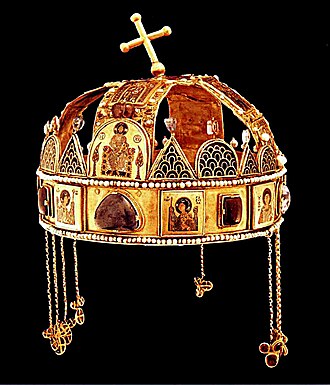
One of the most precious treasures housed in the Budapest Parliament is the Hungarian Holy Crown (Szent Korona), considered the most important symbol of national sovereignty.1 This crown, revered as sacred, has been used to crown most Hungarian kings since the 12th century. Since 1 January 2000, the Holy Crown has been on display in the Dome Hall of the Parliament, where it is guarded 24 hours a day by the solemn Crown Guard of the Hungarian Army. Its location in the heart of the Parliament underlines its profound importance for the Hungarian nation. The crown has a fascinating history, with parts dating back to the 12th century and possibly even the 11th century. It is composed of a diadem of Byzantine origin, known as the ‘Corona Graeca’, and an upper band of Latin style, known as the ‘Corona Latina’, topped by a distinctive twisted cross. The Holy Crown symbolises the king’s authority over the Hungarian Crown Lands and was a key element for the legitimacy of monarchs throughout the country’s history. No king in Hungary was considered truly legitimate without being crowned with this revered insignia. During World War II, the crown was handed over to the United States in 1945 to prevent it from falling into the hands of Soviet forces. It was not until 1978 that the crown was returned to Hungary, thanks to the initiative of then US President Jimmy Carter. Its return was a moment of great significance for the Hungarian people. It is important to note that it is not permitted to take photographs of the Holy Crown.
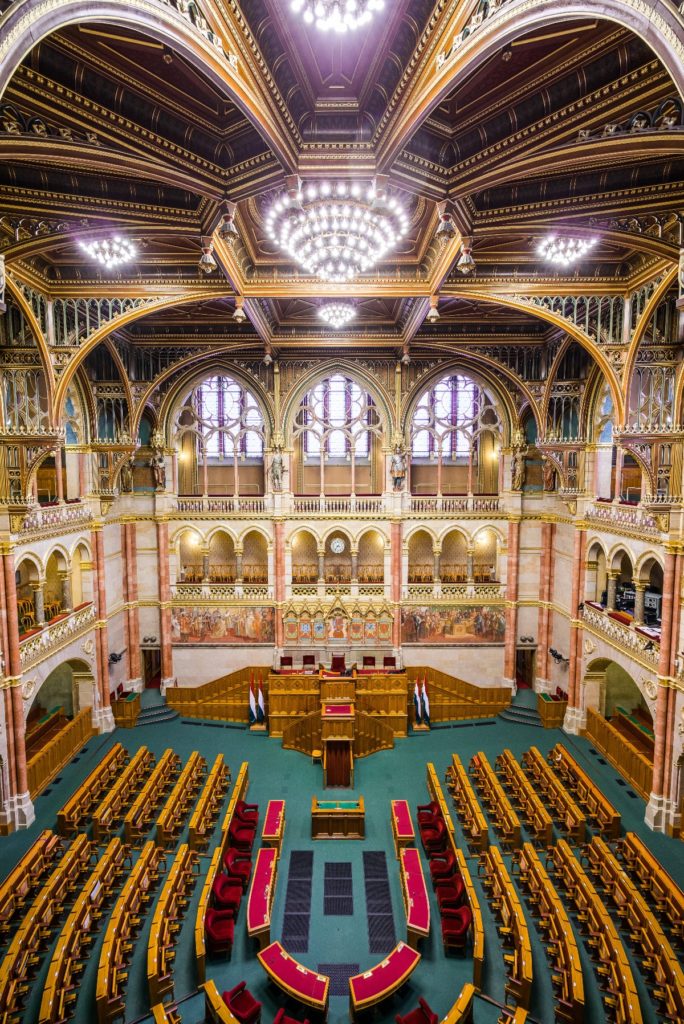
The Budapest Parliament was originally designed with two legislative chambers: a Lower House, representing the people, and an Upper House, composed of the nobility and clergy. Today, however, the Hungarian National Assembly operates as a unicameral body, meeting in the former Lower House. It is in this chamber that the debates and voting on the laws governing the country take place. The former Upper House, once the meeting place of the Hungarian nobility, is now used for official ceremonies, conferences and, of course, for guided tours that allow the public to admire its opulent design. It is remarkable that both session halls are identical in size and design, an architectural detail that symbolised the equality between popular representation and the historic Upper House at the time the building was constructed. The majestic Dome Hall, located at the heart of Parliament, is also used on occasion for joint ceremonial sittings of the two chambers. The former Upper Chamber Hall is notable for its elegant Slavic oak panelling, rich gilded decorations and a gallery that stretches over several floors, evoking the opulence of the 19th century.
In addition to the Holy Crown and the session rooms, the interior of the Budapest Parliament houses an impressive collection of valuable works of art, historical artefacts and decorative elements. The Main Staircase, which connects the main entrance to the Dome Hall, is richly adorned with magnificent frescoes by the renowned Hungarian painter Károly Lotz and features eight imposing granite columns. The Hall of the Chamber of Peers displays pyrogranite sculptures, a speciality of the prestigious Zsolnay factory in Pécs, and the largest hand-knotted carpet in Europe, an exceptional piece of craftsmanship. Throughout the building, both inside and outside, numerous statues depicting important Hungarian rulers, leaders of the Transylvanian region and famous military figures can be admired, visually narrating the rich history of the country. Stained glass windows and glass mosaics by the talented artist Miksa Róth add beauty and colour to the interior spaces of the Parliament. The Hall of the Chamber of Peers also houses a monumental work of art: the imposing painting ‘The Conquest’ by the famous painter Mihály Munkácsy, depicting the arrival of the Magyar tribes in the Carpathian Basin in the year 896. Finally, the Parliament’s library, which houses a vast collection of over 700,000 books, many of them in foreign languages, and which also serves as the official repository of United Nations documents, is worth mentioning.
Visitor Information
Fortunately, the Budapest Parliament is open to the public and can be visited by tourists from all over the world. However, access to the interior of the building is only allowed on guided tours, which last approximately 45 minutes. These guided tours offer the opportunity to explore the most important and representative rooms of the building. Tours are available with guides who speak several languages, including English, German, French, Italian, Spanish and Hungarian, or visitors may choose to use audio guides available in an even wider range of languages. Those interested in visiting the Parliament are strongly advised to book tickets in advance through the official website, as demand for tickets can be very high, especially during the peak tourist season.
The opening hours of the Parliament vary according to the season of the year. From 1 April to 31 October, the building is open to the public from 8:00 to 18:00. During the winter months, from 1 November to 31 March, opening hours are from 8:00 to 16:00. It is important to take these opening hours into account when planning your visit. Last entry for guided tours is allowed one hour before closing time, which ensures sufficient time to complete the tour. The Parliament is closed to the public during plenary sessions of the National Assembly, as well as on Hungarian national holidays (1 January, 15 March, Easter Sunday and Monday, 1 May, 20 August, 23 October, 1 November and 24-26 December) and on other special occasions. It is advisable to check the official opening calendar before planning your visit. However, on some specific national holidays, such as 15 March, 20 August and 23 October, Parliament opens its doors to the public free of charge, which usually attracts a large number of visitors.
Tickets to visit the Budapest Parliament can be purchased online via the official website or directly at the ticket office of the Visitors’ Centre, located on the north side of Kossuth Lajos Square. It is strongly recommended to purchase tickets online in advance to avoid possible queues at the ticket office and to ensure entry at the desired time, as tickets may sell out, especially during the high season. Ticket prices vary depending on whether the visitor is a citizen of a European Economic Area (EEA) country or not, with reduced rates available for students and families. Valid ID is required to verify citizenship and age. Children under 6 years of age can enter the Parliament free of charge. Before entering Parliament, all visitors must undergo a security check. Large bags, objects considered dangerous and liquids of any kind are not allowed, with the exception of medicines or baby food carried in transparent plastic bottles of no more than 0.5 litres. An appropriate dress code is required to enter the Parliament, therefore it is recommended to avoid wearing symbols of dictatorship or any kind of clothing that could be considered disrespectful towards the National Assembly, the Hungarian Holy Crown or human dignity in general. Finally, it should be noted that only guide dogs accompanying visually impaired persons are allowed inside the building; no other pets are allowed.
The Budapest Parliament strives to be accessible to all visitors. Both the Visitor Centre and the Parliament building itself have accessible facilities for people with disabilities, including ramps, lifts and wheelchairs which can be requested at the Visitor Centre. For families travelling with young children, the Visitor Centre has toilets equipped with baby changing facilities. As for photography, photography and video recording are permitted in most areas of the Parliament, with the notable exception of the room where the Hungarian Holy Crown is displayed.

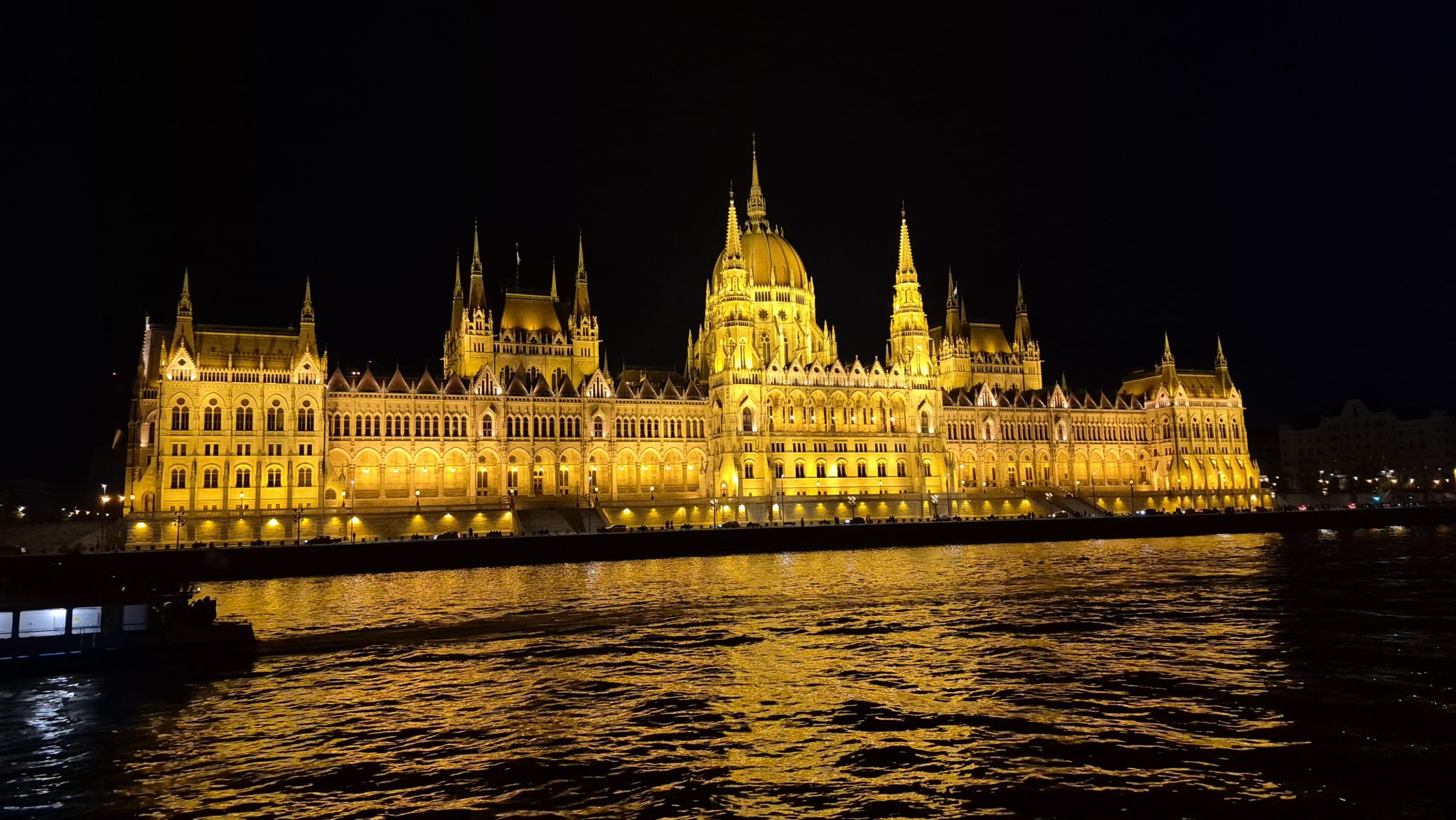
Comments are closed.